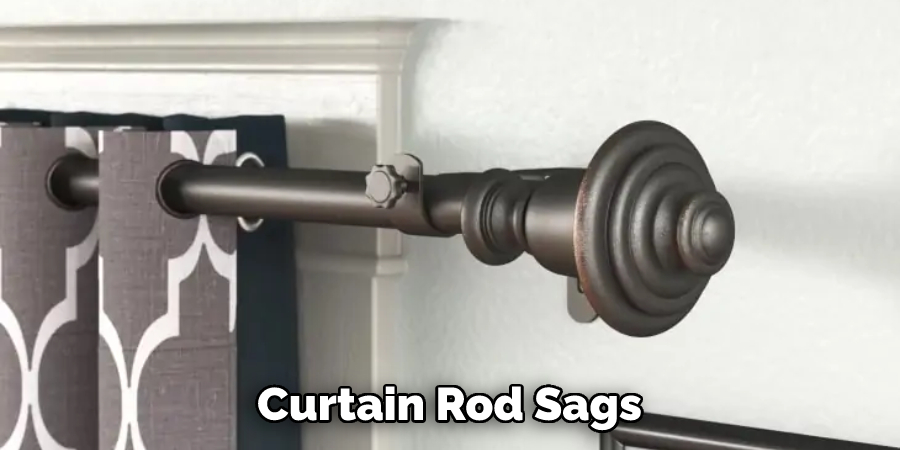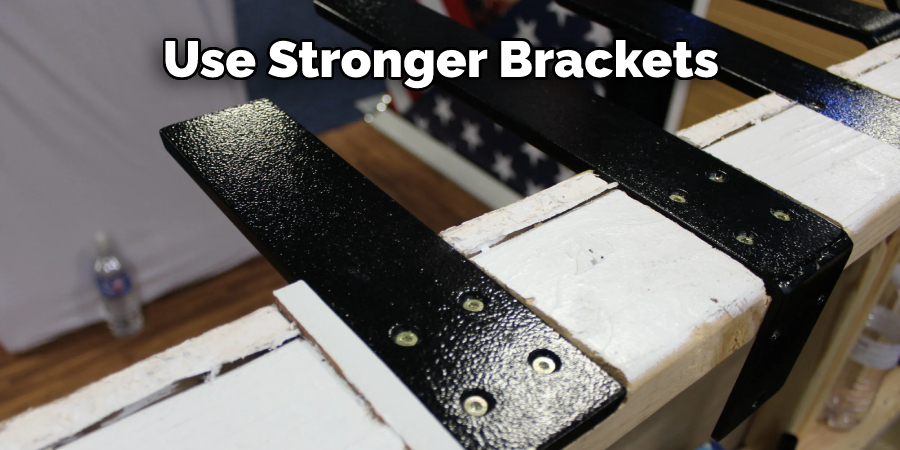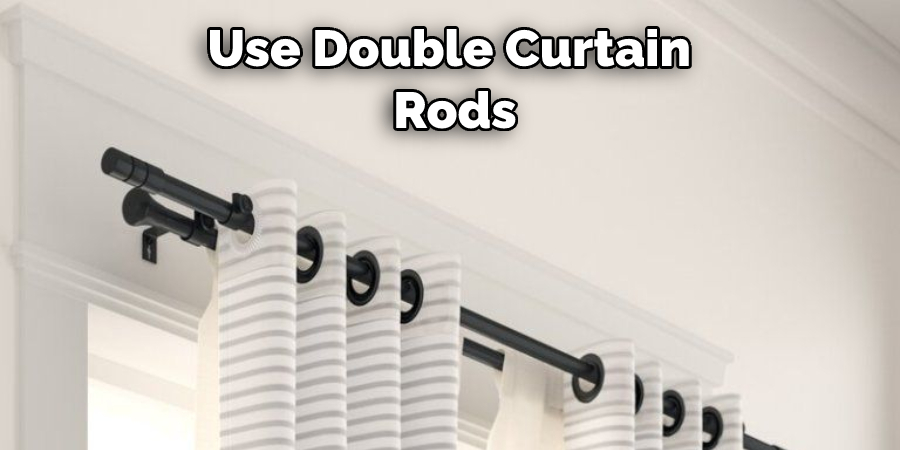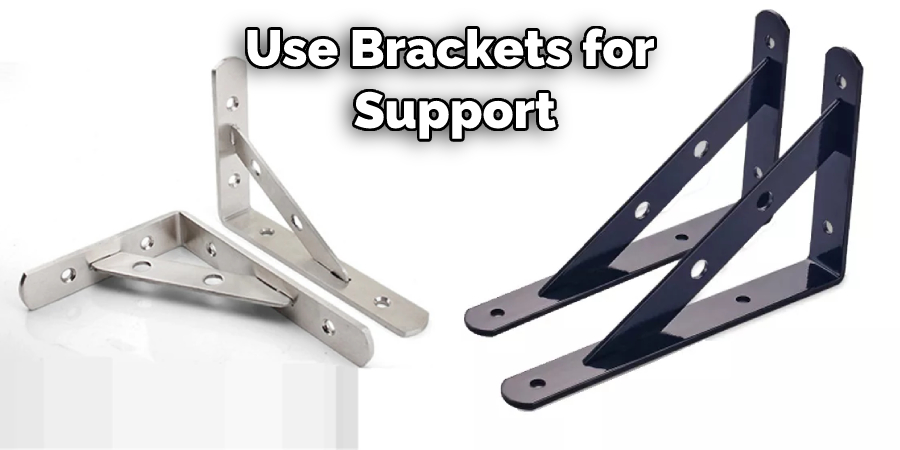Do you have a curtain rod that’s starting to sag? It cannot be enjoyable when your curtains don’t hang evenly. Curtain rods can sag for various reasons, but luckily, there are many ways to fix them. This blog post will cover the most common causes of curtain rod sagging and how to fix a sagging curtain rod. We’ll also provide tips on how to keep your rods from sagging in the future. So if your curtains are looking a little droopy, read on.

Summary: Fixing a sagging curtain rod can be accomplished in several ways. Try using stronger brackets, larger screws or nails, wall anchors, a curtain rod with a larger diameter, hanging curtains from the ceiling, using a heavier curtain rod, using tiebacks, double curtain rods, tension rods or Command Hooks.
What Causes Curtain Rods to Sag?
There are a few reasons why curtain rods might start to sag. The most common cause is that the brackets that support the rod are not mounted properly. If the brackets are not level or installed correctly, they can cause the rod to sag. Another common cause of sagging curtain rods is that the screws or nails holding the brackets in place have come loose. Over time, these screws and nails can loosen and cause the brackets to become loose. Again, this can cause the curtain rod to sag.
Another common cause of sagging curtain rods is that the weight of the curtains is too much for the rod to support. If you have heavy curtains, they can cause the rod to sag over time. The other most common cause of sagging curtain rods is that they are not made of high-quality materials. Cheap curtain rods are more likely to sag over time. Lastly, sagging can also be caused by the wall itself. If the wall is not level, it can cause the curtain rod to sag.
Is It Bad if My Curtain Rod Sags?
A sagging curtain rod is not necessarily a bad thing. However, it can be annoying if your curtains are not hanging evenly. Additionally, sagging curtain rods can cause the curtains to bunch up at the bottom, which can look messy. If you want to avoid these problems, it’s best to fix a sagging curtain rod as soon as you notice it. Curtain rods that sag are also more likely to fall, which can cause damage to your curtains and floor.

10 Ways How to Fix a Sagging Curtain Rod:
1. Use Stronger Brackets
If your curtain rod is sagging because of weak brackets, you can solve the problem by using stronger brackets. Stronger brackets can support a heavier curtain rod and prevent it from sagging. There are various types of brackets available, so be sure to choose ones that can support the weight of your curtains. First, remove the old brackets from the wall to use stronger brackets. Then, install the new brackets and screw them into place. Try to use brackets that are made of metal or another strong material.
2. Use Larger Screws or Nails
If your bracket screws or nails are loose, you can solve the problem by using larger screws or nails. This will help secure the bracket and prevent it from becoming loose over time. First, remove the old screws or nails and then install the new ones. Be sure to use a level when installing the new screws or nails so that the bracket is level and secure. Using nails, use a hammer to tap them into place.
3. Use Wall Anchors
If your wall is made of plaster or another material that is not suitable for screws or nails, you can use wall anchors to secure the brackets. Wall anchors are easy to install and remove and will not damage your walls. To install wall anchors, first, drill a hole in the wall where you want to place the anchor. Next, insert the anchor into the hole and use a screwdriver to tighten it. Finally, screw the bracket into the anchor. If you need to remove the anchor, unscrew it from the wall.
4. Use a Curtain Rod with a Larger Diameter
If your curtain rod is sagging because it is not strong enough to support the weight of your curtains, you can solve the problem by using a curtain rod with a larger diameter. A larger diameter curtain rod can support more weight without sagging. To use a larger diameter curtain rod, you will need to purchase new brackets that are compatible with the larger rod. First, measure the inside width of your window to determine how long the new curtain rod will need to be. Then, purchase a curtain rod that is at least 2 inches wider in diameter than your current rod. Finally, install the new brackets and rod following the instructions that came with the rod.
5. Hang Curtains From the Ceiling
If your curtain rod is sagging because of the weight of your curtains, you can solve the problem by hanging the curtains from the ceiling. This will take some effort, but it will be worth it in the end. You will need to find a way to attach the curtains to the ceiling. You can use hooks, nails, or even adhesive strips. Once the curtains are hung from the ceiling, you will need to adjust the length so that they are the right size for your window. This solution is not permanent, but it will work for the time being. If you want a more permanent solution, you can try one of the other options on this list.

6. Use a Heavier Curtain Rod
If your curtain rod is sagging because it is not heavy enough, you can solve the problem by using a heavier curtain rod. This will provide more support for your curtains and help to keep them from sagging. It is important to ensure that the new curtain rod is compatible with the brackets you are using. To use a heavier curtain rod, you will need to purchase new brackets that are designed to support the weight of the new rod. First, remove the old brackets and curtain rod. Next, install the new brackets and screw them into place. Finally, hang the new curtain rod and curtains.
7. Use Curtain Tiebacks
If your curtains are sagging in the middle, you can use curtain tiebacks to help hold them up. This will also add a decorative touch to your curtains. Curtain tiebacks come in various styles and can be easily found at most home improvement stores. To use curtain tiebacks, first determine where you want to place them on the curtain. Then, insert the tieback through the loop on the back of the curtain and pull it tight. Finally, tie the two ends of the tieback together. If your curtains are too long, you can adjust the tiebacks to make them shorter.
8. Use Double Curtain Rods
You can use double curtain rods if you want to add extra support to your curtains and prevent them from sagging. This is a great option if you have heavy curtains or if your curtain rod is not very sturdy. To install double curtain rods, hang a second curtain rod below your existing one. Then, clip your curtains onto both rods. This will distribute the weight of the curtains more evenly and prevent them from sagging.
9. Use Tension Curtain Rods
If your curtain rod is sagging because it is not installed properly, you can try using a tension curtain rod. Tension curtain rods are an easy and affordable way to hang curtains without damaging your walls. All you need is a drill, screwdriver, and a few screws.
And most importantly, no hammering is required. To hang a tension curtain rod, measure the width of your window. Then, install the brackets that come with the rod by drilling screws into the wall at the appropriate height. Next, slide the curtain rod through the brackets and twist it until it is tight. Finally, hang your curtains on the rod and enjoy your new, sagging-free window treatments.

10. Use Command Hooks
If you don’t want to damage your walls or drill any holes, you can use command hooks to hang your curtains. This is a quick and easy solution, but keep in mind that the hooks might not be strong enough to hold heavy curtains. First, measure the width of your window and cut the command hook strip to size. Then, peel off the backing and stick it to the top of the window frame. Finally, hang your curtains on the hooks and adjust them to the desired length.
How to Prevent Curtain Rods from Sagging
1. Don’t Overload the Curtain Rod
The first step to preventing your curtain rod from sagging is to make sure you don’t overload it in the first place. That means not hanging too many curtains on the rod and not using excessively heavy curtains. If you do have to use heavy curtains, look for a sturdier curtain rod that can support the weight.
2. Use Brackets for Support
If your curtain rod is already sagging, you can try to reinforce it with brackets. You can either buy special brackets made for this purpose or just use some simple L-brackets. Attach the brackets to the wall on either side of the window, and then screw them into the sides of the curtain rod. This will help to take some of the weight off of the rod itself and should help to prevent further sagging.
3. Choose a High-quality Curtain Rod
If you’re having trouble with sagging curtain rods, it may be time to invest in a higher-quality rod. Cheap, flimsy curtain rods are more likely to sag, so spending a little extra money on a sturdier rod can save you a lot of hassle in the long run. Look for a curtain rod that is made of sturdy materials and has a good weight capacity.
4. Use a Rigid Curtain Rod
If you really want to prevent your curtain rod from sagging, you can use a rigid rod instead of a traditional one. Rigid rods are made of metal or another sturdy material, and they don’t have any give to them. That means they can support a lot more weight without sagging, so they’re ideal for heavy curtains. You can find rigid curtain rods at most home improvement stores.

5. Hang the Curtain Rod Properly
Another important factor in preventing curtain rod sag is to make sure you hang the rod properly. That means using strong screws or nails to secure it to the wall and ensuring the screws or nails are properly anchored into a stud. If you’re not sure how to hang a curtain rod, ask a friend or family member for help or hire a professional.
Frequently Asked Questions
Why is My Tension Rod Not Tightening?
One common issue that people experience with their tension rods is that they are not tightening sufficiently. This can be a result of worn-out parts, incorrect installation, or inadequate maintenance. To test if your tension rod is tight enough, you can use the following guideline: hold the end of the tension rod against a door jamb and slowly pull it towards you until it goes full stretch. If it does not go all the way to the end, then your tension rod may need adjustment or replacement.
Do Curtain Rods Need Center Support?
depending on its size, type of fabric, and weight. That being said, curtain rods typically do not need center support unless they are made from a very lightweight material or if they are unusually short or tall. If you’re not sure whether or not your curtain rod needs center support, you can always contact the manufacturer to get their opinion.
Will Tension Rods Damage Walls?
Tension rods are designed to suspend large objects, such as TVs and the like, from the wall. As long as they’re installed properly and use a suitable suspending device (such as screws or nails), tension rods should not damage walls in any way. If you have any questions about how your tension rod installation is proceeding, please contact an expert for further guidance.
Should My Curtains Touch Floor?
depends on your particular situation. If you live in a single-story home or an apartment without high ceilings, then it may be safe to have curtains that touch the floor. However, if you live in a multi-story home or own property with high ceilings, then it might not be advisable to hang curtains near the ground.
The reason for this is that objects at ground level are more likely to catch fire when there’s smoke and flames present from a blaze. This means that having curtains hanging close to the floor could lead to considerable damage and loss of property value should something happen during fire season.
Conclusion
So there you have it, everything you need to know about how to fix a sagging curtain rod. If you follow these tips, you’ll be able to save yourself some money and give your windows a fresh update in no time at all. So what are you waiting for? Get started today. Thanks for reading!
You can check it out to Remove a Shear Bolt
